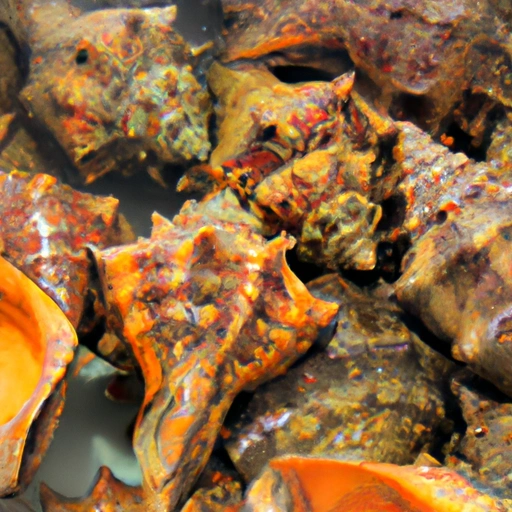Conch
Description

Conch is a type of sea snail found predominantly in the warm waters of the Caribbean Sea and the Gulf of Mexico. It is highly regarded for its sweet, delicate flavor and firm texture, making it a prized ingredient in various regional cuisines. Conch meat is typically extracted from its spiral shell and can be prepared in numerous ways, from being served raw in salads to being cooked in soups and stews.
Common uses
Conch is most commonly used in salads, soups, stews, and fritters. It is a key ingredient in Caribbean conch salad, a citrusy raw dish, and in the famous Bahamian conch chowder. Conch fritters are a popular appetizer in Florida and the Caribbean islands, while marinated and grilled conch is a delicacy found in many coastal restaurants.
Nutritional value
Calories
A 3-ounce (approximately 85 grams) serving of conch meat contains about 111 calories, making it a relatively low-calorie seafood option.
Protein
This same serving size provides about 22.4 grams of protein, which is essential for muscle growth and repair.
Fat
Conch is low in fat, with a 3-ounce serving containing roughly 0.3 grams of fat, contributing to its lean nutritional profile.
Carbohydrates
Conch is also low in carbohydrates, with less than 1 gram per 3-ounce serving.
Vitamins
Conch is a good source of vitamins, such as vitamin B12, which is important for nerve tissue health and blood formation.
Minerals
It is rich in minerals like selenium, magnesium, and potassium, all of which play vital roles in overall health.
Health benefits
As a lean protein source, conch can contribute to a healthy diet, supporting weight management and muscle maintenance. Its high selenium content aids in antioxidant activity, while magnesium supports nerve and muscle function. The potassium found in conch can help regulate blood pressure levels.
Potential risks
Some potential risks include the possibility of foodborne illness if not prepared properly or overharvesting leading to sustainability concerns. Certain individuals may also have allergies to shellfish, including conch.
Common recipes
Traditional recipes include conch salad, conch chowder, conch fritters, and marinated conch steaks. It's often found in ceviche or served raw with a squeeze of lime.
Cooking methods
Conch can be steamed, boiled, grilled, fried, or eaten raw. It is often tenderized by pounding before cooking to soften its muscular texture.
Pairing with other ingredients
Conch pairs well with bright, acidic flavors like citrus juices, as well as with spicy elements like chili peppers. It also complements creamy textures, such as those in chowders and sauces.
Summary
Conch is a versatile seafood ingredient known for its role in Caribbean cuisine, though its use has spread to North American and European dishes. Offering a host of nutritional benefits, conch is enjoyed in a variety of preparations that reflect the diverse cultures that appreciate its unique flavor and texture. As with any seafood, responsible sourcing and proper preparation are important to enjoy conch safely and sustainably.